
Commodore International Corporation was a Bahamian home computer and electronics manufacturer with executive offices in the United States founded by Jack Tramiel and Irving Gould. Commodore International (CI), along with its subsidiary Commodore Business Machines (CBM), was a significant participant in the development of the home computer industry in the 1970s to early 1990s. In 1982, the company developed and marketed the world's second-best selling computer, the Commodore 64, and released its Amiga computer line in July 1985. Commodore was one of the world's largest personal computer manufacturers, with sales peaking in the last quarter of 1983 at $49 million.

Shadow of the Beast is a platform game developed by Reflections and published by Psygnosis in 1989. The original version was released for the Amiga, and was later ported to many other systems. The game was known for its graphics, with many colours on screen and up to twelve levels of parallax scrolling backdrops, and for its atmospheric score composed by David Whittaker that used high-quality instrument samples.
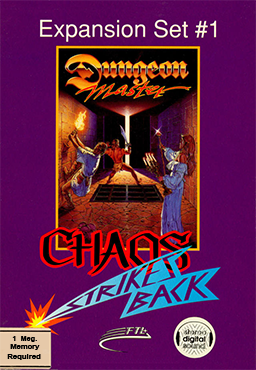
Chaos Strikes Back is an expansion and sequel to Dungeon Master, the earlier 3D role-playing video game. Chaos Strikes Back was released in 1989 and is also available on several platforms. It uses the same engine as Dungeon Master, with new graphics and a new, far more challenging, dungeon.
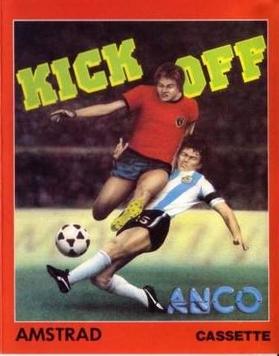
The Kick Off franchise is a series of football simulation video games created by Dino Dini. Kick Off was published by Anil Gupta's publishing house Anco Software for the Atari ST and Commodore Amiga. First released in 1989, Kick Off was well-received and won awards.

Loopz is a puzzle video game designed and programmed by Ian Upton for the Atari ST in 1989. He previously worked as head game designer for Audiogenic, who acquired exclusive rights to the game, then in 1990 arranged for Mindscape to publish it for computers in North America and consoles worldwide.

Virtua Tennis 2, known as Tennis 2K2 in North America and Power Smash 2 in Japan, is a sequel to Virtua Tennis that was released for the Sega Dreamcast, Sega NAOMI arcade unit and Sony's PlayStation 2 in 2001–2002. New features included the ability to slice and play as female players such as Monica Seles, Serena Williams, Venus Williams and Lindsay Davenport and the males such as Patrick Rafter, Magnus Norman, Thomas Enqvist and Carlos Moyá and mixed doubles matches. The game was created and produced by Hitmaker, with Acclaim Entertainment publishing it in Europe for the PS2. This was the last Virtua Tennis game to be released for the Dreamcast following its discontinuation.
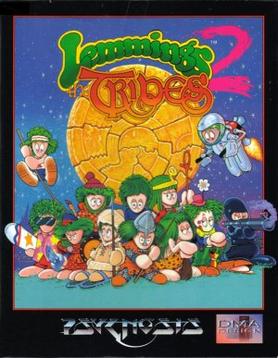
Lemmings 2: The Tribes is a 1993 puzzle strategy video game developed by DMA Design and published by Psygnosis, and is the sequel to the 1991 video game Lemmings. Similar to the original title, the game sees the player guiding various tribes of anthropomorphised lemmings through a number of levels, using various skills to help them reach the exit. Expanding on the mechanics of the original game, Lemmings 2 featured a more open-ended series of levels with different 'tribes', contained an overarching narrative, expanded the number of skills, simplified the requirements for clearing levels, and included a practice mode for players to test out new gameplay mechanics. Development of Lemmings 2 was more intensive, with Psygnosis having greater involvement in attempt to recreate the success of the original game. A focus on the production of the game was cross-development of a large number of ports, with the game released to consoles including the Mega Drive, Super NES and Game Boy. Lemmings 2 was a commercial success and received positive reviews from critics, with praise directed towards its additional gameplay mechanics and greater variety of levels and abilities.

One on One: Dr. J vs. Larry Bird, commonly known as One on One, is a basketball video game written by Eric Hammond for the Apple II and published by Electronic Arts in 1983. It was initially ported to the Atari 8-bit computers, ColecoVision, Commodore 64, and IBM PC compatibles. Versions followed for the TRS-80 Color Computer, Classic Mac OS, Amiga, and ZX Spectrum. In Europe, the publisher was Ariolasoft. Atari Corporation released an Atari 7800 port in 1987.

Super Tennis is a 1991 tennis video game for the Super NES. It was an early release for the Super Nintendo and uses mode 7.

PGA Tour Golf is a golf video game and the first in the PGA Tour game series. It was developed by Sterling Silver Software and released in 1990, for MS-DOS. It was initially published by Electronic Arts, which subsequently released versions of the game for Sega Genesis and Amiga in 1991, followed by a version for the SNES in 1992. By 1994, Tengen had published versions for Sega's Master System and Game Gear consoles. PGA Tour Golf received generally positive reviews for its realism, sound, and camera. Several critics considered the computer versions to be the best golf game available at the time of its release. It was followed by PGA Tour Golf II.

Pro Tennis: World Court is a tennis sports video game that was released by Namco in 1988 for Japanese arcades. It runs upon Namco System 1 hardware, and was inspired by the 1987 Famicom game Family Tennis. In August 1988, the game was ported to the PC Engine console, in which a new tennis-based role-playing quest mode was added, and was later ported to the North American TurboGrafx-16 console by NEC under the title of World Court Tennis in 1989. Up to four players could play simultaneously. A sequel named Super World Court was released in 1992, which ran on Namco NA-1 hardware and allowed up to four players to play simultaneously. The arcade version was recently confirmed to be released on the PlayStation 4 and Nintendo Switch as part of the Arcade Archives lineup on May 12, 2022 worldwide.
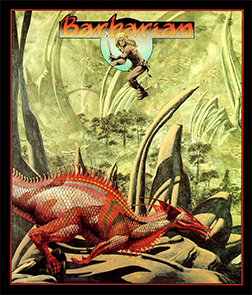
Barbarian is a 1987 platform game by Psygnosis. It was first developed for the Atari ST, and was ported to the Amiga, Commodore 64, MS-DOS, MSX, Amstrad CPC, and ZX Spectrum. The Amiga port was released in 1987; the others were released in 1988. The cover artwork is by fantasy artist Roger Dean.

Top Spin is a 2003 tennis video game developed by PAM Development and Indie Games and published by Microsoft Game Studios for the Xbox, later published by Atari Europe for PC in 2004 and by 2K for the PlayStation 2 in 2005. It is a simulation tennis game in which players compete in singles and doubles tennis matches and exhibition tournaments. Gameplay modes include a career mode in which players develop skills and rise through the ranks of an international league. Top Spin featured an expanded control scheme compared to its contemporaries, and introduced several innovations including 'risk shots', in which players can execute more difficult serves and shots.

Virtua Tennis: World Tour, known in Japan as Power Smash: New Generation, is a tennis video game which was released for the Sony PlayStation Portable.

Sampras Tennis 96 is a 1995 tennis video game for the Sega Genesis developed by Codemasters. It is the sequel to Pete Sampras Tennis. Like its predecessor, it was one of the few titles released on the J-Cart format, which provides two additional controller ports for multiplayer games. The game was followed by Pete Sampras Tennis '97, which was released for the PlayStation and personal computers.

Grand Slam Tennis is a tennis video game, developed by EA Canada, and released for the Wii in 2009. Versions for the PlayStation 3 and Xbox 360 were planned to be released Autumn 2009, but they have been "delayed indefinitely". Instead, a sequel, Grand Slam Tennis 2, was released exclusively for those consoles in February 2012.
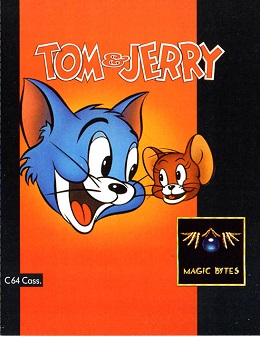
Tom & Jerry is a 1989 platform game developed and published by German company Magic Bytes. It is the first video game based on the cartoon of the same name, and was released in the United States and Europe, for Amiga, Atari ST, and Commodore 64 computers.
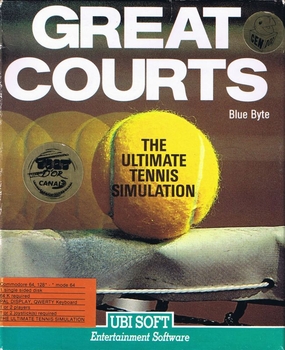
Pro Tennis Tour is a 1989 sports video game developed by Blue Byte and published by Ubi Soft for the Amiga, Atari ST and MS-DOS. 8-bit ports for the Amstrad CPC, Commodore 64, and ZX Spectrum were released later. Electronic Arts distributed the game in North America. A sequel, Pro Tennis Tour 2, was released in 1991.
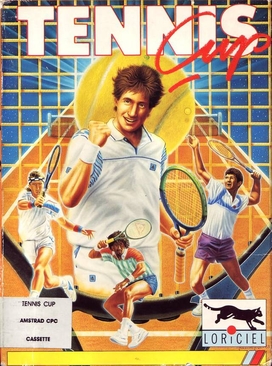
Tennis Cup is a 1990 tennis video game developed and published by Loriciel for the Amiga. It was ported to the Atari ST, MS-DOS and Amstrad CPC during the same year. Tennis Cup was ported to TurboGrafx-16 in 1991 as Davis Cup Tennis. Versions for the Super Nintendo and Mega Drive/Genesis were released in 1993.

International 3D Tennis is a 1990 tennis video game developed by Sensible Software and published by Palace Software for the Amiga, Atari ST, Amstrad CPC, Commodore 64, and ZX Spectrum.





















